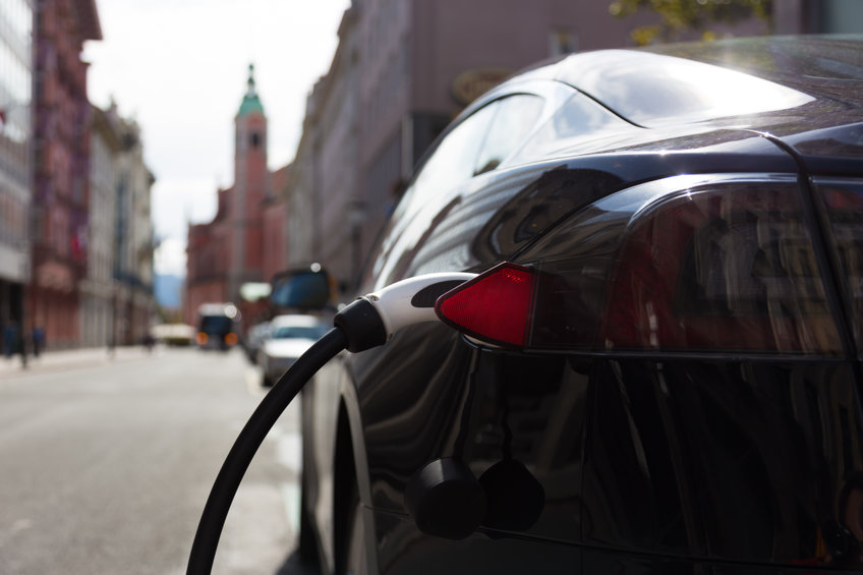
Should battery-powered vehicles be outlawed?
By Donn Dears
The answer is no, but the government must stop trying to force Americans to buy them.
This includes ending subsidies that encourage buying battery-powered vehicles (BEVs) and ending CAFE standards that eventually force the public to buy BEVs.
Safety is the primary reason for ending the support of BEVs. Cost is next in importance.
The Achilles Heel of BEVs is the need to recharge their batteries.
There are situations where BEVs could endanger people’s lives.
The recent Virginia snowstorm was more than an inconvenience for stranded drivers. Still, it would have been far more serious if the vehicles had been BEVs with fully discharged, inoperable batteries.
An internal combustion engine vehicle (ICE) that runs out of gasoline can have the gasoline brought to it so that the vehicle isn’t stranded. A BEV, on the other hand, must be towed to a charging station.
While the Virginia snowstorm was serious, a hurricane could be disastrous.
Anyone living along the Atlantic coast or the Gulf of Mexico must question whether they should own a BEV.
An approaching hurricane always results in orders to evacuate low-lying areas. In the past, families would jump into their ICE vehicle and drive inland, or in the case of Florida, northward toward Georgia.
Evacuation traffic will be bumper to bumper and move at frustratingly slow speeds. How far will a BEV be able to travel in stop-and-go traffic at slow speeds … while using air conditioning? Not too far. Perhaps 150 to 200 miles, at which point the battery will need recharging.
But it requires expensive fast chargers to recharge a BEV in twenty to thirty minutes. At that rate, a single fast charger can charge two BEVs an hour. But how many thousands of BEVs will need to be recharged as people try to escape the hurricane?
Where will people go in the face of an onrushing hurricane when their BEVs become stranded?
Once it reaches land, a hurricane inflicts destruction across a wide area.
It can take several days to restore power to an area after a hurricane has passed.
Utilities marshal their fleets of bucket trucks in anticipation of a hurricane. Today, these trucks are all powered by internal combustion engines. A few use batteries to allow the boom and bucket to work without running the diesel engine.
But what if all these bucket trucks were fully battery-powered?
Consolidated Edison in New York is buying battery-powered bucket trucks and has said, “The truck should have a range of 130 miles and can be recharged in 8 hours using Level 2 chargers.”
Electricity will be unavailable until the power lines are repaired.
No one knows precisely how long battery-powered bucket trucks can operate without being recharged. Probably not for more than eight hours or so, after which they become a few tons of useless equipment stranded in remote areas.
There is also the question of other emergency equipment, such as ambulances. Hospitals have diesel generators to back up their equipment when grid power fails. But in a zero-carbon world, there won’t be diesel-powered backup generators. So how will ambulances get their batteries recharged?
Firetrucks and some ambulances may use fuel cells that use hydrogen. But, like BEVs, they have to be brought to a hydrogen filling station to get refueled.
Clearly, there are significant safety issues with battery-powered vehicles.
While safety is of paramount importance, what will it cost for the electric grid to support over 200 million battery-powered vehicles?
The National Renewable Energy Laboratory (NREL) has said it would require doubling existing generating capacity if all light vehicles were BEVs and homes were heated with electricity.
Ignoring whether wind and solar can replace natural gas and coal, the cost will be enormous: In the trillions of dollars no matter what type of generation is used.
Accommodating over 200 million BEVs requires far more than merely building new power plants.
Starting with where people live and ignoring apartments in big cities, the average home will need to install two charging stations. Older homes with entrance panels of 100 amps or less will face considerable expense. Even newer homes with 250 amp panels will incur a cost of several thousand dollars.
Next, the distribution transformers will have to be replaced. DTs are the cans on telephone poles and green boxes in the yard.
Typically, there is a distribution transformer for every four homes, so the total number of distribution transformers is substantial.
No one knows how many must be replaced, but supplying enough power for charging eight BEVs at roughly the same time every day will likely require replacing most distribution transformers with larger units.
Next, the substation transformers feeding the distribution transformers could also become overloaded. No one knows how many of them will have to be replaced at the cost of a million dollars each.
Additionally, no one knows how many new distribution and transmission lines are required to supply the electricity needed by BEVs.
Clearly, cost is also an issue.
We are just beginning to understand the effect BEVs can have on safety and cost.
There are other ramifications to mandating the adoption of BEVs, not the least of which is whether the US is trading energy independence for a dependency on China for materials, as outlined in the book Net-zero Carbon, The Climate Policy Destroying America.
Policies encouraging the transition to BEVs, such as subsidies for BEVs and CAFE standards, must be ended.
We need to allow free markets to determine the future of BEVs.
Author
Donn Dears
Donn is an engineer and retired senior executive of the General Electric Company who spent his career in the power sector. He led organizations that provided engineering services for GE’s large electrical apparatus and spearheaded the establishment of GE subsidiary companies around the world. Donn actively participated in providing engineering services to a wide range of industries, including electric utilities, steel, mining, and transportation.
From cfact.org